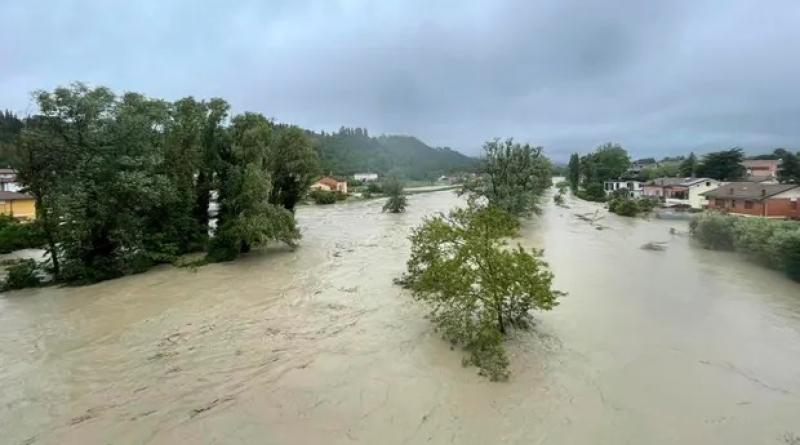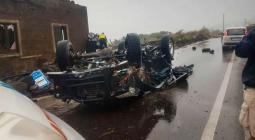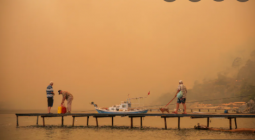Devastating floods in Italy claim lives and leave thousands homeless

Nine people have died and thousands have been evacuated from their homes after heavy storms wreaked havoc in the northern Italian region of Emilia-Romagna, causing severe flooding and landslides.
People sought refuge on the rooftops of their homes after 21 rivers broke their banks, submerging entire towns.
Among the victims were an elderly man and a couple who owned a company in the agriculture sector, according to Corriere della Sera. The body of a German woman was found on a beach in Cesenatico, a town by the Adriatic coast, but it is unclear if she was killed in the storms. Others are still reported missing.
The Emilia Romagna F1 Grand Prix scheduled this weekend has been cancelled.
“The only irreparable thing in this emergency are the nine people who lost their lives, and we hope there are no more,” said Stefano Bonaccini, president of Emilia Romagna.
Italy’s civil protection agency said on Wednesday there could be worse to come. “The rainfall is not over, it will continue for several hours,” the agency’s chief, Titti Postiglione, told SkyTG24 news. “We are facing a very, very complicated situation.”
There has been heavy rain across Italy in recent days but the worst-affected area has been Emilia-Romagna and parts of the central Marche region, where 12 people died in floods last September.
In a video shared on social media, the voices of people trapped in their homes in Faenza, a city in Ravenna province, could be heard shouting for help. Massimo Isola, the mayor of Faenza, said: “We had a night that we will never forget. We’ve never known such flooding in our city, it is something unimaginable.”
Enzo Lattuca, the mayor of Cesena, where citizens swam through the floods to rescue others, said: “The situation is disastrous, it’s a catastrophe, and the rain has not yet finished.”
He said on Wednesday morning the River Savio was starting to swell again.
A bridge that connected Motta-Budrio with San Martino in the area of Bologna collapsed overnight. “Do not go near it,” Italy’s fire service warned. “There is a gas pipeline close by which also seems to be affected.”
Five thousand people were evacuated from their homes in Ravenna. “It’s probably the worst night in the history of Romagna,” Michele de Pascale, the mayor of Ravenna, told Rai radio. “Ravenna is unrecognisable for the damage it has suffered.”
Dario Nardella, the mayor of Florence, said mountain villages on the Romagna side of the Mugello valley had been cut off due to landslides.In a post on social media, the Italian prime minister, Giorgia Meloni, expressed her “total closeness to the affected population”, adding that the government was closely monitoring the situation.
The deputy prime minister, Antonio Tajani, said the government would “do everything to help the population hit by the flooding in Emilia-Romagna”.
“From those evacuated to the agricultural companies that have lost entire harvests,” he added. “The rescue forces and volunteers are heroes. I pray for the victims and their families.”
Weather-related disasters have been on the rise in Italy, a country deemed particularly vulnerable to climate change. Emilia-Romagna and parts of Marche were also affected by severe flooding in early May in which two people died.
In 2022, the hottest year on record in Italy, 310 extreme weather events were registered, causing the deaths of 29 people, according to Legambiente, an environmental group. In late November, 12 people, including several children, died in a landslide on the island of Ischia.
A report in 2021 by Ispra, the Italian government’s environment agency, said 7,423 municipalities (93.4% of the total) across the country were at risk of landslides, floods and coastal erosion. However, the government has done little to mitigate the risk.
Before the latest floods, Emilia-Romagna and other areas of northern Italy were blighted by a drought that dried out land, reducing its capacity to absorb water.
cover photo:The Savio River in Cesena, central Italy, which burst its banks. Photograph: AP






